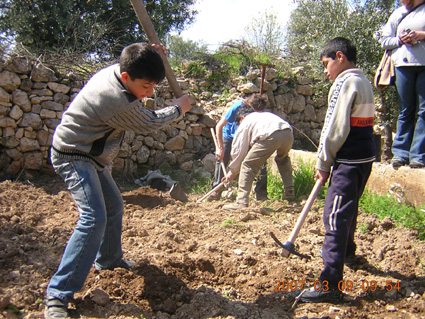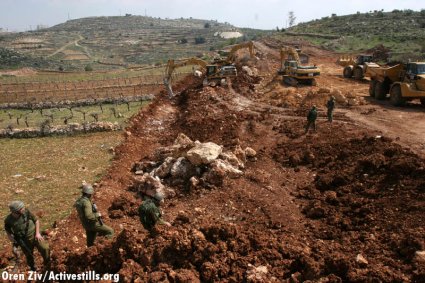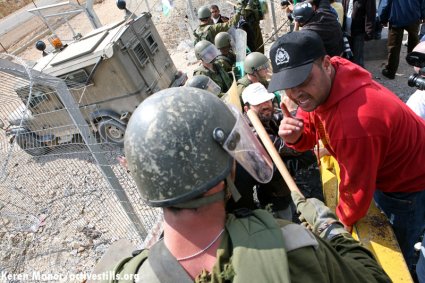Associated Press
Crowd-control devices like stun grenades and tear gas have injured a number of journalists in recent weeks, including two television crewmen covering a women’s protest Thursday — and reporters are charging they’ve been targeted by Israeli security forces.
Over the last three months, at least five journalists were injured — including an AP photographer whose leg was broken by a stun grenade — while covering protests or Israeli military operations. In one incident, an AP photographer said a stun grenade was thrown at reporters as they talked to soldiers.
The army denied any targeting of journalists, and said it would investigate the incidents.
The military “does not intentionally harm journalists, and any such claims on this matter are baseless,” a military statement said, adding that there are “inherent risks to journalists” covering combat operations.
The casualties were caused by non-lethal means the Israelis use to break up demonstrations and riots. However, stun grenades, which make a loud noise can cause serious injuries when their canisters fly through the air, and tear gas can also cause injury in high concentrations.
On Thursday, paramilitary border police fired stun grenades from a distance of about 10 meters to break up a demonstration of women at the Qalandia checkpoint between the West Bank and Jerusalem.
Associated Press Television cameraman Eyad Moghrabi was hit on the leg by a flying piece of metal. TV footage showed a stun grenade exploding among the reporters, who were several meters away from the demonstrators. The pictures show the reporters scattering, with one clutching her leg.
“This was not the first time they fire where the journalists are located,” Moghrabi said.
Police spokesman Micky Rosenfeld said the officers warned everyone, including journalists, that their presence was illegal, before firing the stun grenades, denying that reporters were targeted.
In its statement, the military said it “strives to ensure that the press is not hindered,” but said that when soldiers declare an area closed, reporters are expected to leave.
While agreeing that the military did not have a deliberate policy, Daniel Blumenthal, vice chairman of the Foreign Press Association, said there are numerous complaints. “We assume some soldiers act on their own initiative because of their idea about where a journalist should be (during) an event.”
Thursday’s casualties were only the most recent.
On Wednesday, Al-Jazeera technician Maamoun Othman was wounded when Israeli soldiers fired stun grenades during the arrest of a radical Islamic leader.
“A stun grenade was fired at me directly. It landed on my stomach,” Othman said.
On Feb. 27, journalists say they were hit as they talked to soldiers about covering an army operation in Nablus.
AP photographer Emilio Morenatti said soldiers approached them in jeeps, asking them to leave.
As they were talking with the soldiers “one hand appeared from the (army) car, and threw a stun grenade at us,” he said. No one was hurt.
The FPA protested the Nablus incident, calling it “obstruction and ill treatment of journalists.” Morenatti suffered a broken leg from a fragment of a stun grenade, thrown from a distance of about two meters while he was covering a protest in the West Bank village of Bilin in January.
On Feb. 16, AP photographer Nasser Shiyoukhi was hurt when soldiers fired a tear gas grenade that exploded next to a group of reporters near Hebron.
















